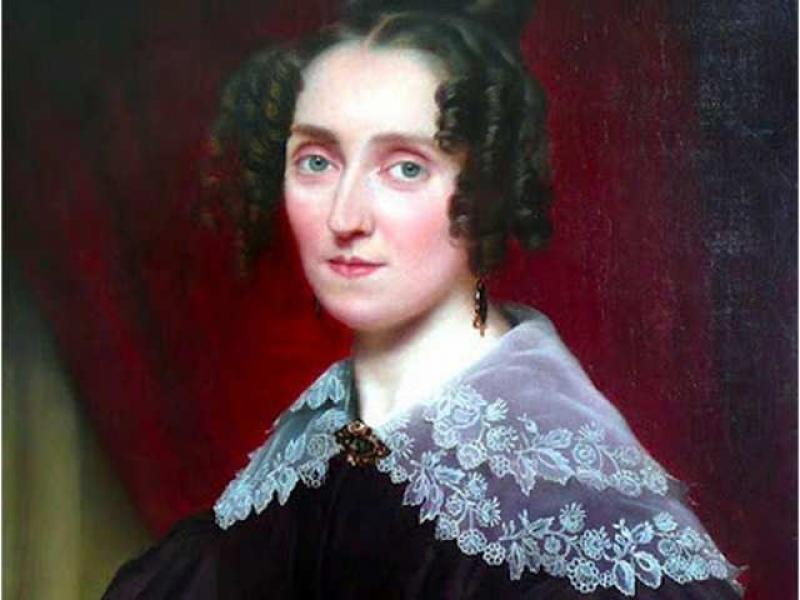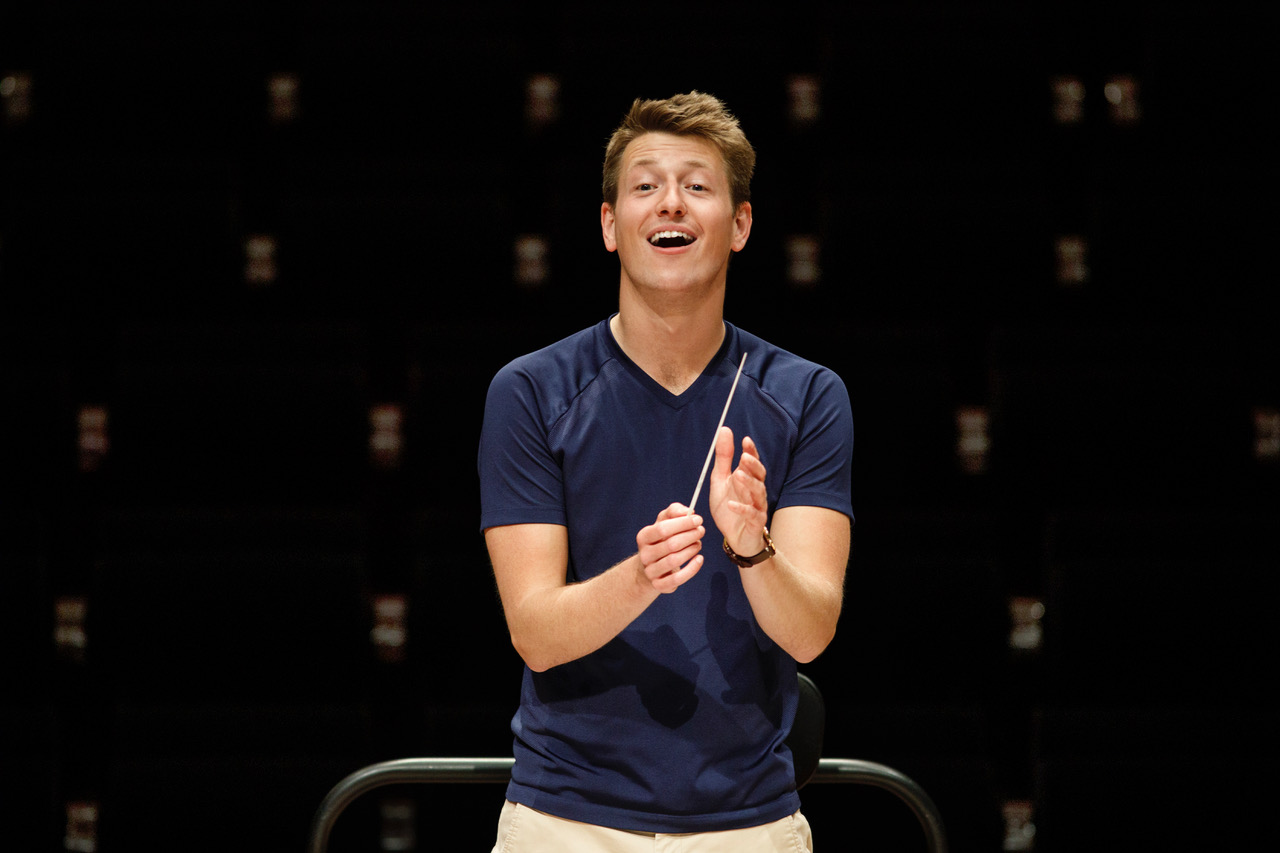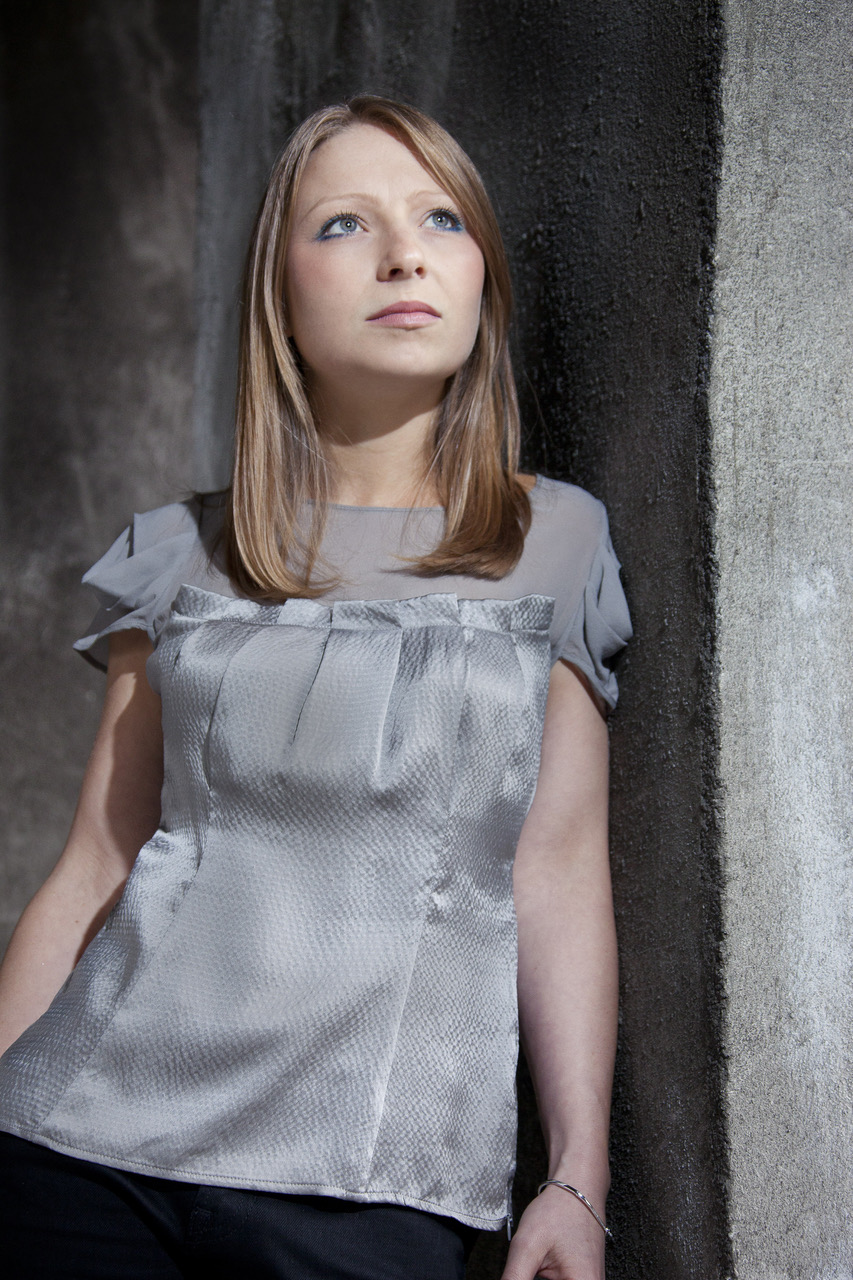Hewitt, Clein, Aurora Orchestra, Ward, Kings Place review – rise and shine | reviews, news & interviews
Hewitt, Clein, Aurora Orchestra, Ward, Kings Place review – rise and shine
Hewitt, Clein, Aurora Orchestra, Ward, Kings Place review – rise and shine
Louise Farrenc, fresh from 19th-century Paris, arrives with a spring in her step

Why does music suddenly disappear? It is all the more heartening when a work as excellent and enjoyable as Louise Farrenc’s Symphony No 3 takes wing once more, but you do have to wonder how in the world such a terrific orchestral piece was permitted to sink and vanish in its day under a morass of dubious opera.
Farrenc (1804-1875) was a highly successful and well-regarded musician in her day, known as a brilliant pianist and the only female professor at the Paris Conservatoire. Her Third Symphony, premiered in 1849, bristles with post-Beethovenian energy; the idiom is a little like Weber, but with a voice all its own, deftly written with never a note too many, plus a satisfying feel for structure and strong conclusions. The slow movement contains some enchanting ambiguity between major and minor, the scherzo fizzes and pounds and the finale is bright with contrapuntal virtuosity.  It was new to most of this audience and the orchestra too – but this was the performance it needed, thanks to the splendid advocacy of the young British conductor Duncan Ward (pictured above), who drew out the distinct characters of every theme, guiding us through the narrative (from memory) with masterful clarity and a wealth of affection. He and the Aurora plunged us headlong into the composer’s atmospheric world; you could almost feel you would walk out of the hall into 19th-century Paris. Farrenc is easily as good as innumerable composers of her era who are trotted out much more often; perhaps, instead of harping on about why, one should simply applaud her rehabilitation and encourage everyone to start programming her music on a regular basis.
It was new to most of this audience and the orchestra too – but this was the performance it needed, thanks to the splendid advocacy of the young British conductor Duncan Ward (pictured above), who drew out the distinct characters of every theme, guiding us through the narrative (from memory) with masterful clarity and a wealth of affection. He and the Aurora plunged us headlong into the composer’s atmospheric world; you could almost feel you would walk out of the hall into 19th-century Paris. Farrenc is easily as good as innumerable composers of her era who are trotted out much more often; perhaps, instead of harping on about why, one should simply applaud her rehabilitation and encourage everyone to start programming her music on a regular basis.
The concert opened with a world premiere that paid tribute to a pioneer of another kind. Charlotte Bray’s The Certainty of Tides (the composer pictured below) was commissioned by the First 100 Years to celebrate the centenary of women in the UK and Ireland being permitted to join the legal profession after Parliament passed the Sex Disqualification (Removal) Act in 1919. The title is from Maya Angelou’s poem Still I Rise and the composer credits the sculpture Amidst the Powerful and the Powerless by Drago Trsar as her inspiration. A solo cello – Natalie Clein, with powerful, eloquent and full-blooded tone – is offset by a string orchestra that interacts with the solo line in discussions plangent with expression and spangled with pizzicato; much of the piece is wrought around soaring cello lines that, suitably enough, rise.
 And thence to Mozart, the Piano Concerto in E flat K482. Of his 27 piano concertos, only a handful pop up regularly in concert; this ought to be one of them, yet it’s relatively unusual. It is half a step – and only 10 Köchel catalogue numbers – away from the opera The Marriage of Figaro, and Mozart treats the woodwind instruments almost as a group of singers, soloists in their own right, especially in the engaging set of variations that forms the slow movement. The soloist was Angela Hewitt, whose fine, supple touch gleamed ravishingly through the conversational exchanges and cadenza alike. Ward created beautifully judged pacing: this was positive, gutsy, expressive Mozart that never had to rush to be lively or shout instead of singing. As encore, Hewitt treated us to a Bach sparkler, the Gigue from the Partita No 1.
And thence to Mozart, the Piano Concerto in E flat K482. Of his 27 piano concertos, only a handful pop up regularly in concert; this ought to be one of them, yet it’s relatively unusual. It is half a step – and only 10 Köchel catalogue numbers – away from the opera The Marriage of Figaro, and Mozart treats the woodwind instruments almost as a group of singers, soloists in their own right, especially in the engaging set of variations that forms the slow movement. The soloist was Angela Hewitt, whose fine, supple touch gleamed ravishingly through the conversational exchanges and cadenza alike. Ward created beautifully judged pacing: this was positive, gutsy, expressive Mozart that never had to rush to be lively or shout instead of singing. As encore, Hewitt treated us to a Bach sparkler, the Gigue from the Partita No 1.
Here’s a funny thing, though. Piano design grew larger through the 20th century to suit concert halls that were doing likewise. Then, guess what? Some new halls started to become smaller again. So here we were in the pleasant, modest-sized Kings Place Hall 1 and there on stage was a mahoosive Fazioli grand that must have been 10 foot long. It took up more than a third of the platform’s width; the small violin sections had to squeeze in on either side; and much of the audience would have found the crucial woodwind obscured from view by the black expanse of lid. The instrument sounded glorious, of course, but while one wouldn’t want to condemn Hewitt to the vicissitudes of an 18th-century fortepiano, the size perhaps offered pause for thought.
rating
Explore topics
Share this article
Add comment
The future of Arts Journalism
You can stop theartsdesk.com closing!
We urgently need financing to survive. Our fundraising drive has thus far raised £49,000 but we need to reach £100,000 or we will be forced to close. Please contribute here: https://gofund.me/c3f6033d
And if you can forward this information to anyone who might assist, we’d be grateful.

Subscribe to theartsdesk.com
Thank you for continuing to read our work on theartsdesk.com. For unlimited access to every article in its entirety, including our archive of more than 15,000 pieces, we're asking for £5 per month or £40 per year. We feel it's a very good deal, and hope you do too.
To take a subscription now simply click here.
And if you're looking for that extra gift for a friend or family member, why not treat them to a theartsdesk.com gift subscription?
more Classical music
 BBC Proms: Ehnes, Sinfonia of London, Wilson review - aspects of love
Sensuous Ravel, and bittersweet Bernstein, on an amorous evening
BBC Proms: Ehnes, Sinfonia of London, Wilson review - aspects of love
Sensuous Ravel, and bittersweet Bernstein, on an amorous evening
 Presteigne Festival 2025 review - new music is centre stage in the Welsh Marches
Music by 30 living composers, with Eleanor Alberga topping the bill
Presteigne Festival 2025 review - new music is centre stage in the Welsh Marches
Music by 30 living composers, with Eleanor Alberga topping the bill
 Lammermuir Festival 2025 review - music with soul from the heart of East Lothian
Baroque splendour, and chamber-ensemble drama, amid history-haunted lands
Lammermuir Festival 2025 review - music with soul from the heart of East Lothian
Baroque splendour, and chamber-ensemble drama, amid history-haunted lands
 BBC Proms: Steinbacher, RPO, Petrenko / Sternath, BBCSO, Oramo review - double-bill mixed bag
Young pianist shines in Grieg but Bliss’s portentous cantata disappoints
BBC Proms: Steinbacher, RPO, Petrenko / Sternath, BBCSO, Oramo review - double-bill mixed bag
Young pianist shines in Grieg but Bliss’s portentous cantata disappoints
 theartsdesk at the Lahti Sibelius Festival - early epics by the Finnish master in context
Finnish heroes meet their Austro-German counterparts in breathtaking interpretations
theartsdesk at the Lahti Sibelius Festival - early epics by the Finnish master in context
Finnish heroes meet their Austro-German counterparts in breathtaking interpretations
 Classical CDs: Sleigh rides, pancakes and cigars
Two big boxes, plus new music for brass and a pair of clarinet concertos
Classical CDs: Sleigh rides, pancakes and cigars
Two big boxes, plus new music for brass and a pair of clarinet concertos
 Waley-Cohen, Manchester Camerata, Pether, Whitworth Art Gallery, Manchester review - premiere of no ordinary violin concerto
Images of maternal care inspired by Hepworth and played in a gallery setting
Waley-Cohen, Manchester Camerata, Pether, Whitworth Art Gallery, Manchester review - premiere of no ordinary violin concerto
Images of maternal care inspired by Hepworth and played in a gallery setting
 BBC Proms: Barruk, Norwegian Chamber Orchestra, Kuusisto review - vague incantations, precise laments
First-half mix of Sámi songs and string things falters, but Shostakovich scours the soul
BBC Proms: Barruk, Norwegian Chamber Orchestra, Kuusisto review - vague incantations, precise laments
First-half mix of Sámi songs and string things falters, but Shostakovich scours the soul
 BBC Proms: Alexander’s Feast, Irish Baroque Orchestra, Whelan review - rapturous Handel fills the space
Pure joy, with a touch of introspection, from a great ensemble and three superb soloists
BBC Proms: Alexander’s Feast, Irish Baroque Orchestra, Whelan review - rapturous Handel fills the space
Pure joy, with a touch of introspection, from a great ensemble and three superb soloists
 BBC Proms: Moore, LSO, Bancroft review - the freshness of morning wind and brass
English concert band music...and an outlier
BBC Proms: Moore, LSO, Bancroft review - the freshness of morning wind and brass
English concert band music...and an outlier
 Willis-Sørensen, Ukrainian Freedom Orchestra, Wilson, Cadogan Hall review - romantic resilience
Passion, and polish, from Kyiv's musical warriors
Willis-Sørensen, Ukrainian Freedom Orchestra, Wilson, Cadogan Hall review - romantic resilience
Passion, and polish, from Kyiv's musical warriors
 BBC Proms: Faust, Gewandhausorchester Leipzig, Nelsons review - grace, then grandeur
A great fiddler lightens a dense orchestral palette
BBC Proms: Faust, Gewandhausorchester Leipzig, Nelsons review - grace, then grandeur
A great fiddler lightens a dense orchestral palette

Comments
Back when Tom Service ran his